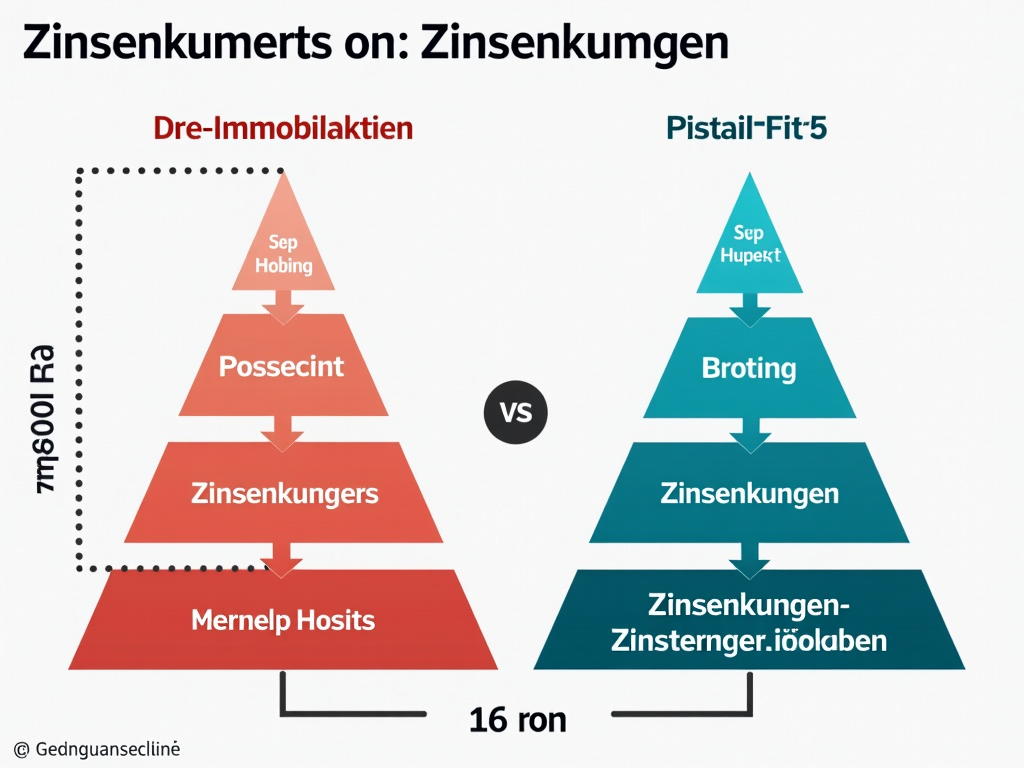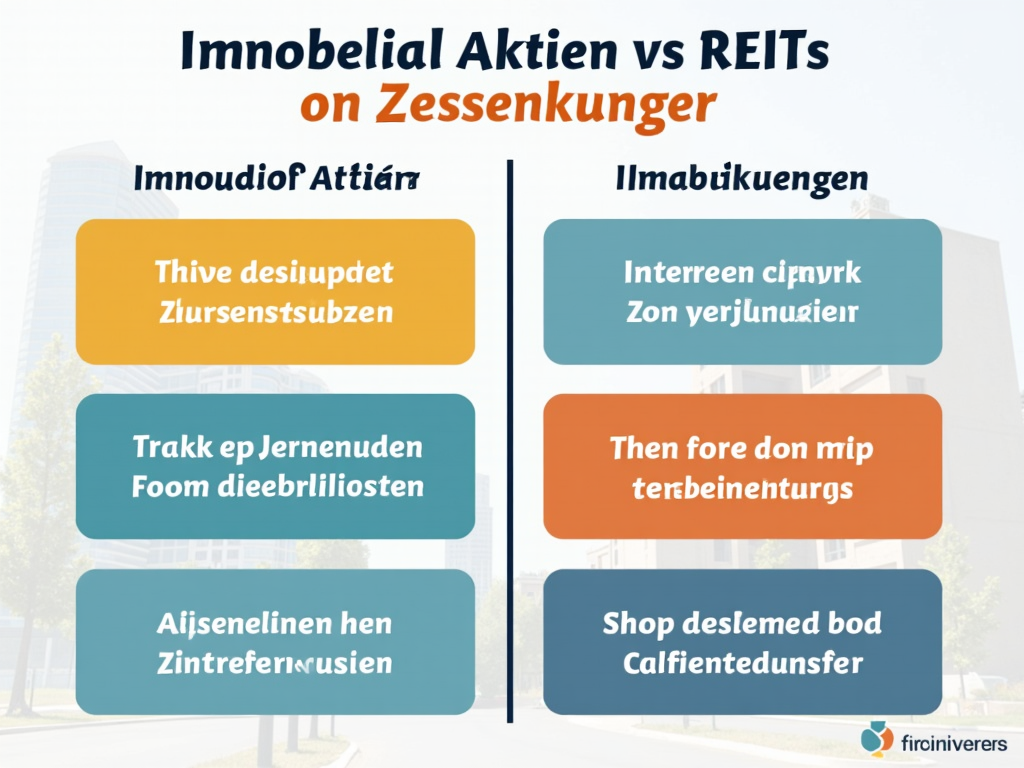In the world of real estate investments, investors often find themselves faced with the choice between real estate stocks and REITs. Both offer unique advantages, but also specific challenges. In times of potential interest rate reductions, the question arises as to which form of investment is more attractive. While real estate stocks are influenced by market fluctuations, REITs provide a stable source of income. This analysis highlights the differences and opportunities of both forms of investment in a declining interest rate environment.
Real Estate Stocks and REITs in a Declining Interest Rate Environment: A Comparison

The real estate sector offers numerous investment opportunities, of which real estate stocks and REITs (Real Estate Investment Trusts) are perhaps the most well-known. Both forms of investment allow for benefiting from movements in the real estate market, but they differ significantly in structure and reaction to macroeconomic factors such as interest rate reductions.
Real estate stocks, which represent shares of companies operating in the real estate sector, offer a way to invest indirectly in the real estate market. These companies often operate in development, management, or rental of properties and are closely tied to the general stock market. In the event of interest rate reductions, these stocks may become more attractive as financing costs for companies decrease and demand for specific real estate services may increase. However, their reaction ultimately depends on market sentiment and the strategies of individual companies.
In contrast, REITs are publicly traded companies that own, manage, or finance real estate directly. They are characterized by high dividend yields, as they are legally required to distribute at least 90% of their profits as dividends. In the case of interest rate reductions, REITs generally experience an increase, as they benefit directly from lower borrowing rates, significantly improving their financing costs and consequently their cash flows. This improvement can lead to higher dividends and thus an increase in attractiveness for investors.
Despite these advantages for both forms of investment, each also carries its specific challenges. While real estate stocks are more vulnerable to market fluctuations, REITs are sensitive to changes in interest rates and their impact on relative attractiveness compared to other fixed-income investments. Additionally, investors benefit from tax advantages when investing in REITs, as these companies do not have to pay corporate taxes at the company level.
In summary, both real estate stocks and REITs offer interesting opportunities in a declining interest rate environment. However, potential investors should carefully consider the specific characteristics and risks of each form of investment to make informed decisions that align with their investment goals.
Capital Values: Opportunities and Challenges of Real Estate Investments in Case of Interest Rate Reductions

In a context of declining interest rates, both real estate stocks and Real Estate Investment Trusts (REITs) present numerous challenges and opportunities. While financing becomes less expensive, market conditions and strategies are radically changing at the same time.
Reducing interest rates generally lowers capital costs, making it easier for investors to access financing for real estate projects. This has the potential to significantly increase demand in the real estate sector. However, increasing demand may also lead to rising property prices, influencing existing return expectations. Once the market adjusts to these price levels, lower prices per square meter may increase pressure on construction of new properties and the return expectations of existing properties.
It is also important to consider that interest rate reductions often indicate economic challenges, such as a potential recession. Such economic weakening may impair the purchasing power of tenants and consequently dampen the demand for commercial and residential projects. In particular, if inflation expectations rise alongside declining rates, the real profitability for property owners may decrease.
However, there are numerous opportunities in this low-rate context. Reduced financing costs enhance cash flow aspects for both real estate stocks and REITs, allowing them to adopt a stronger position in dividend distribution. This increases their attractiveness compared to bond-based investments, which appear less lucrative in a low-rate environment. Furthermore, an increase in investor demand for stable income sources may stimulate the real estate market.
The strategic reaction to these market conditions offers potential for diversification. An analytical focus on high-quality properties in regions with robust economic growth can improve stability and return potential. Active adjustment of investment strategies is essential to respond to changing market dynamics in order to exploit available opportunities and mitigate risks.
In summary, while there are challenges in a declining interest rate environment, these can be transformed into substantial advantages for real estate investors through targeted investment strategies. The key lies in closely observing market conditions and flexibly adapting to new developments.